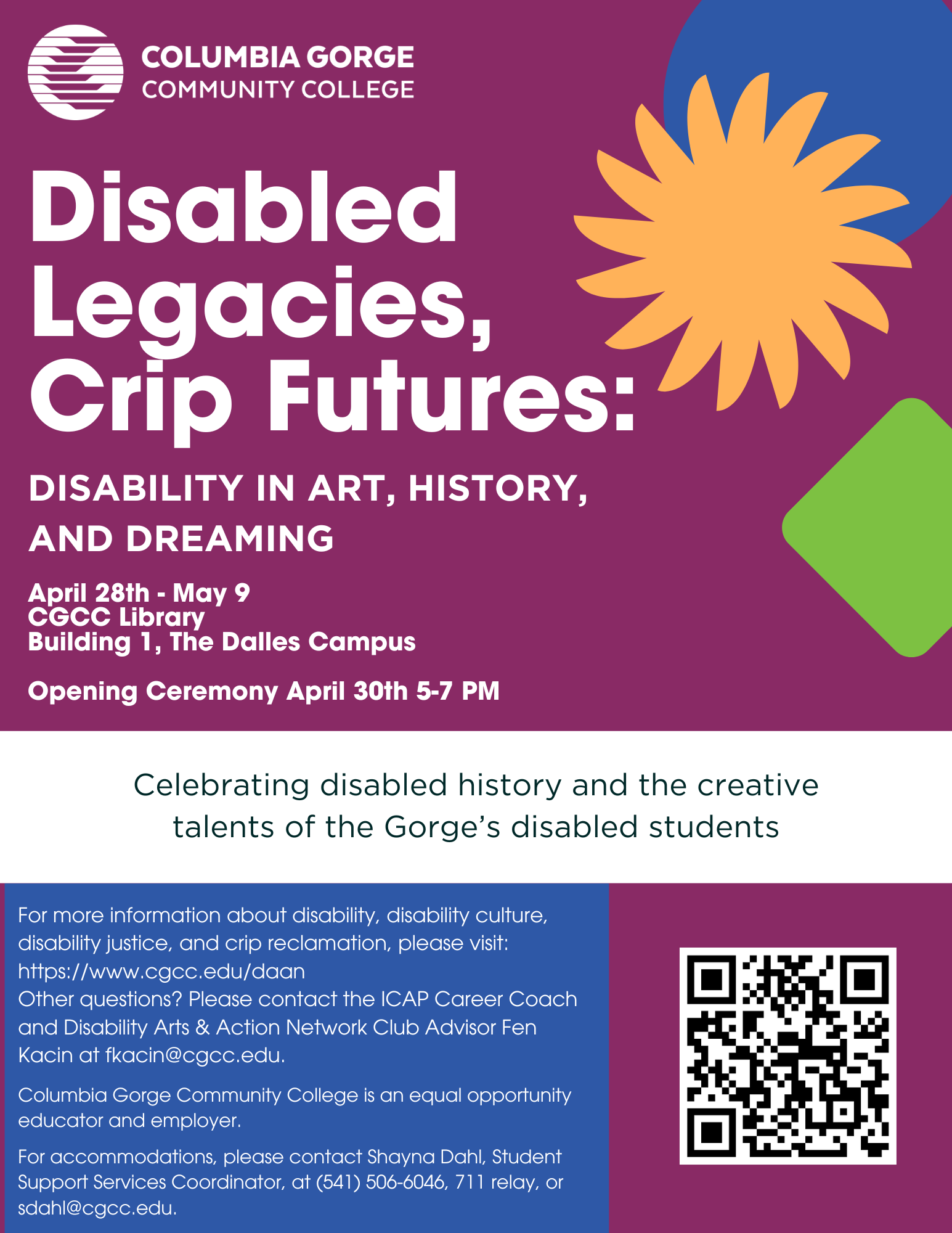Disabled Legacies, Crip Futures: Disability in Art, History, and Dreaming
CGCC is excited to announce Disabled Legacies, Crip Futures: Disability in Art, History, and Dreaming, an exhibit that centers disability history and student art that embodies lived experience with disability.
Opening Ceremony: April 30th
CGCC Library, Building 1, The Dalles Campus
Join us as we celebrate disability history, disability culture, and disability justice. Learn about crip reclamation and disability futurism, celebrate the perspectives and creative talents of disabled student writers and artists from the Gorge, and share your thoughts about disability inclusion.
Can't make it in person but still want to attend? Join us on Zoom at https://cgcc.zoom.us/j/82325066858
Disabled Legacies, Crip Futures: Disability in Art, History, and Dreaming will be in the CGCC Library from April 28-May 9.
For more information about disability, disability culture, disability justice, and crip reclamation, visit:
https://www.cgcc.edu/daan
Questions? Contact ICAP Career Coach Fen Kacin at fkacin@cgcc.edu.
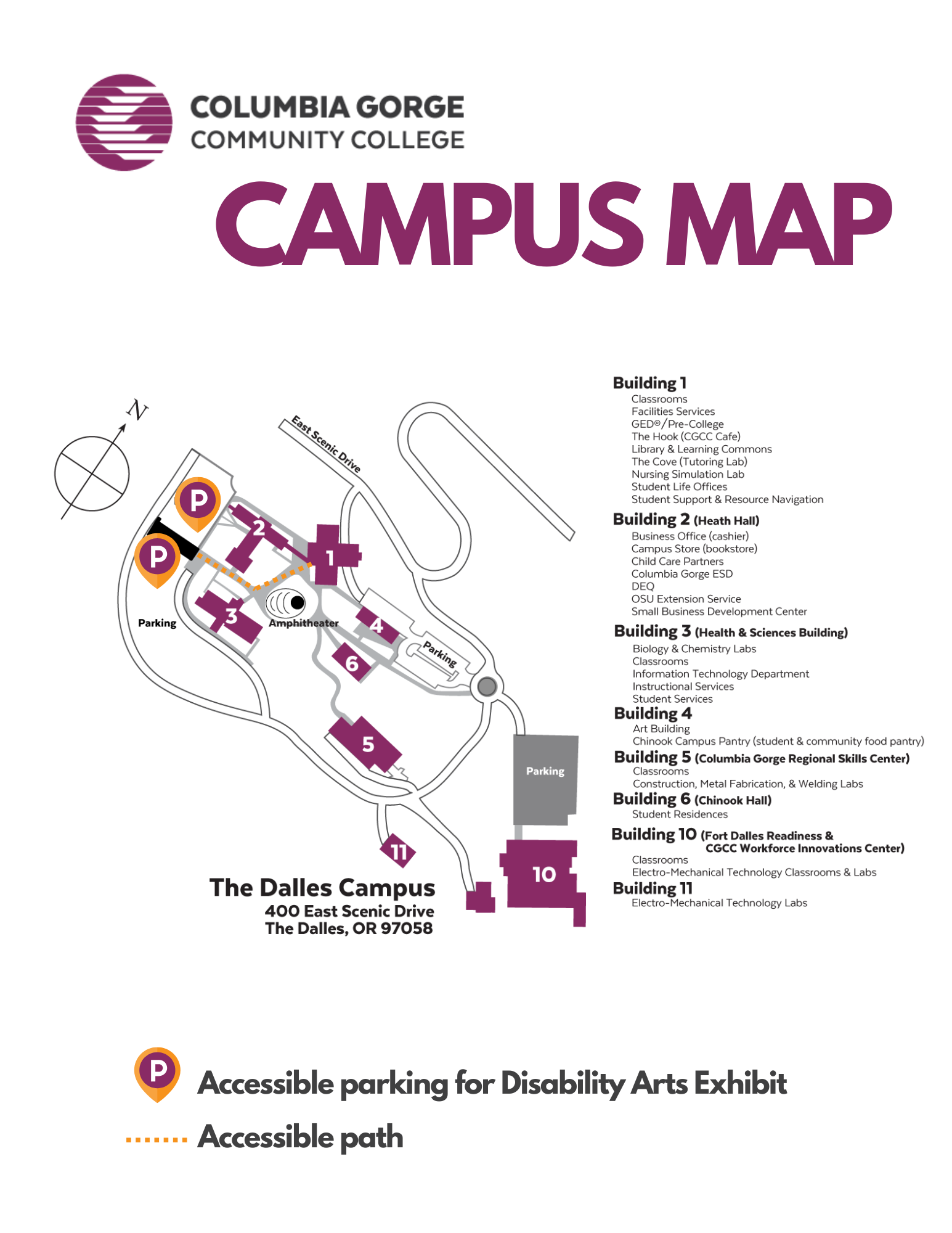
Virtual version of PCC's Disability History Exhibit
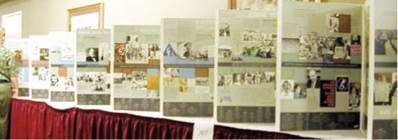
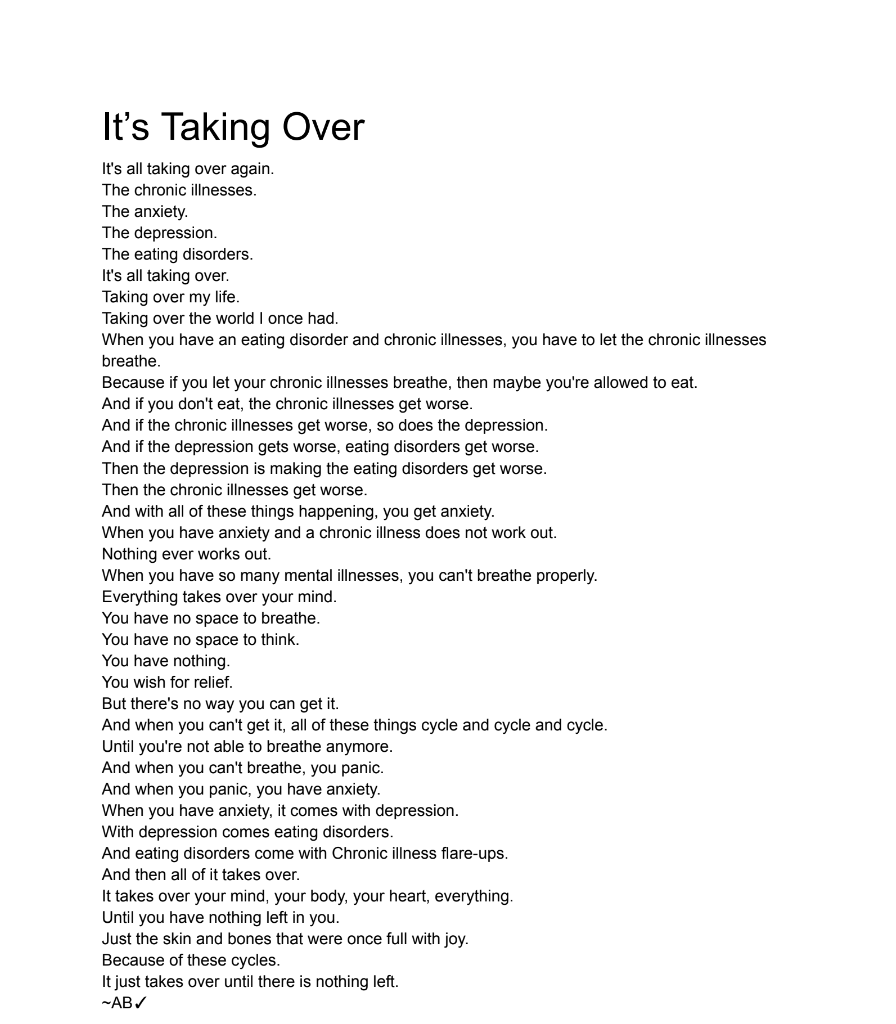
The author, who chooses to remain anonymous, is a Junior at The Dalles High School. In their free time, the author loves playing with cats, writing poetry, relaxing, listening to music, and helping people. She writes poetry as an escape from their real world and uses her writing to cope and regulate strong emotions. They struggle with chronic illnesses such as POTs, EDS, and Chronic pain and wish to further educate anyone interested in learning more about these topics.
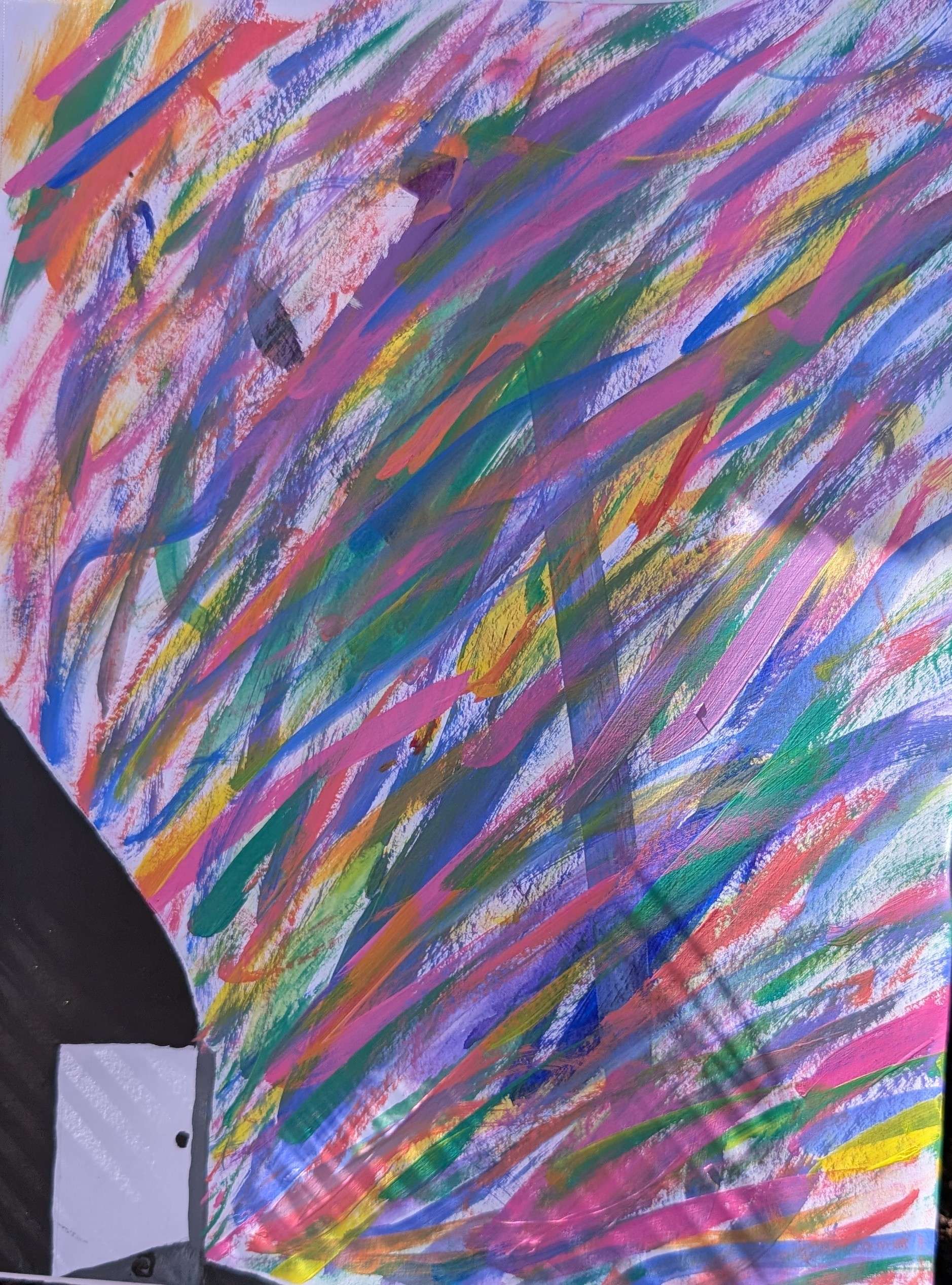
Nina Mace is a college student of multiple years with the end goals of being able to help people, whether it be through healthcare, special education, or art and musical expression.
Disability Advocate Quotes
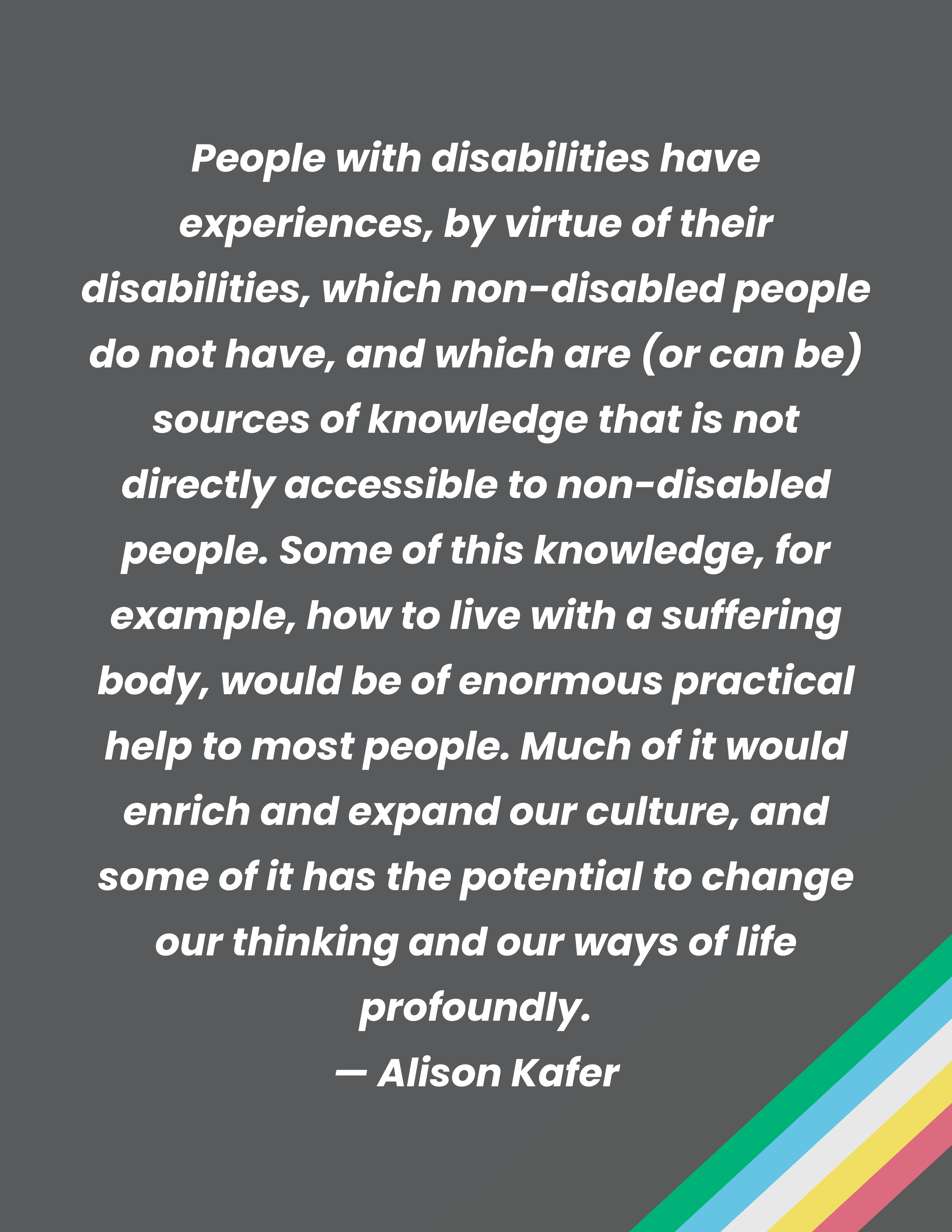
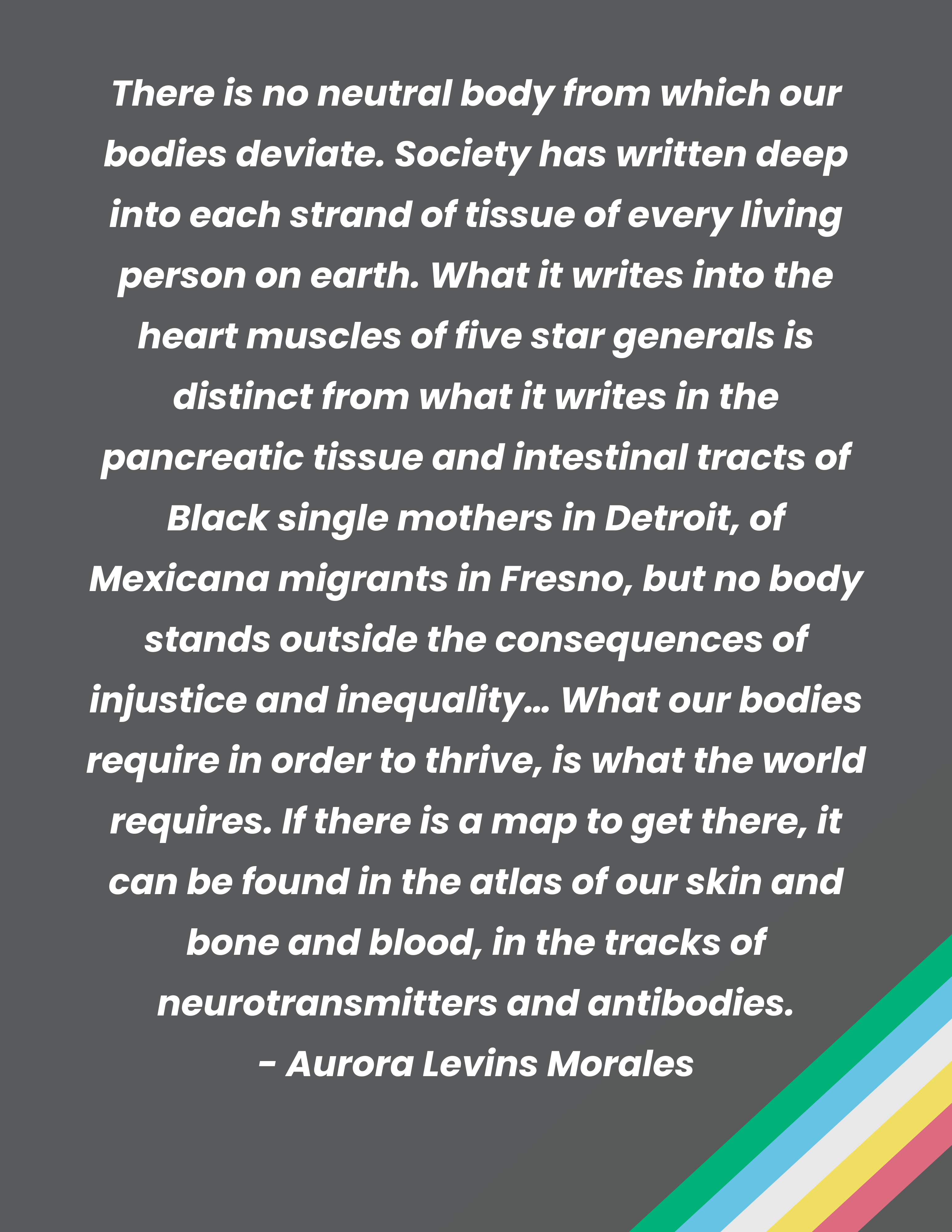
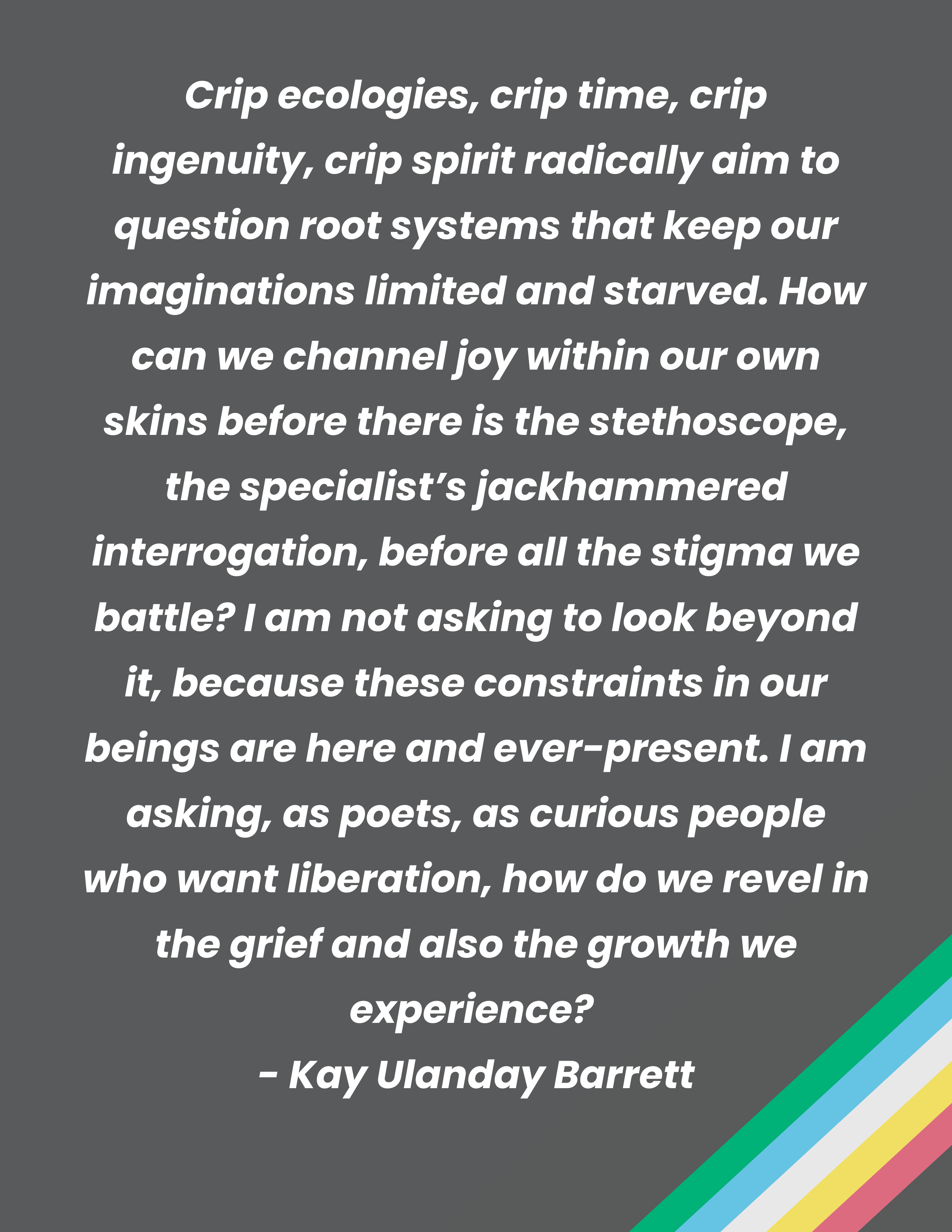
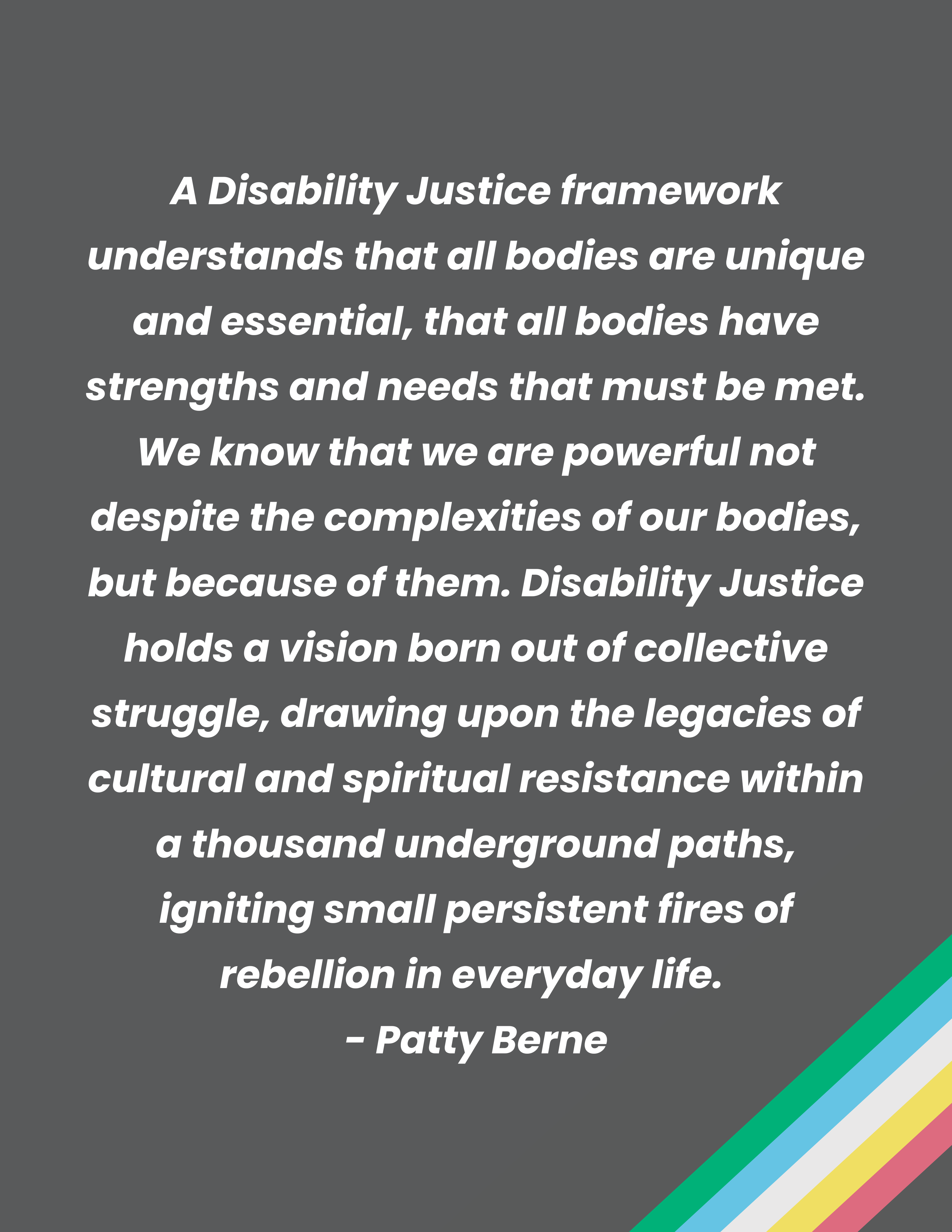
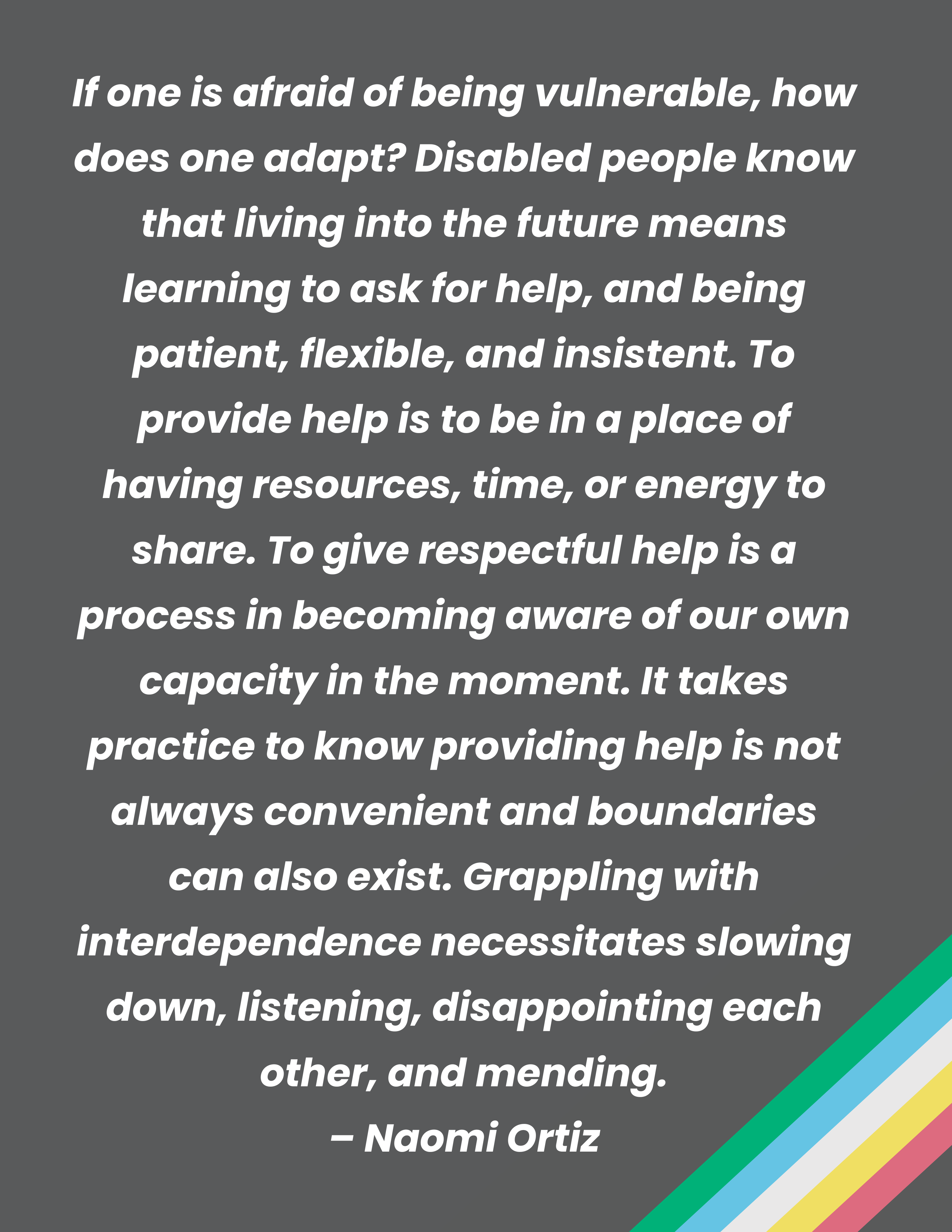
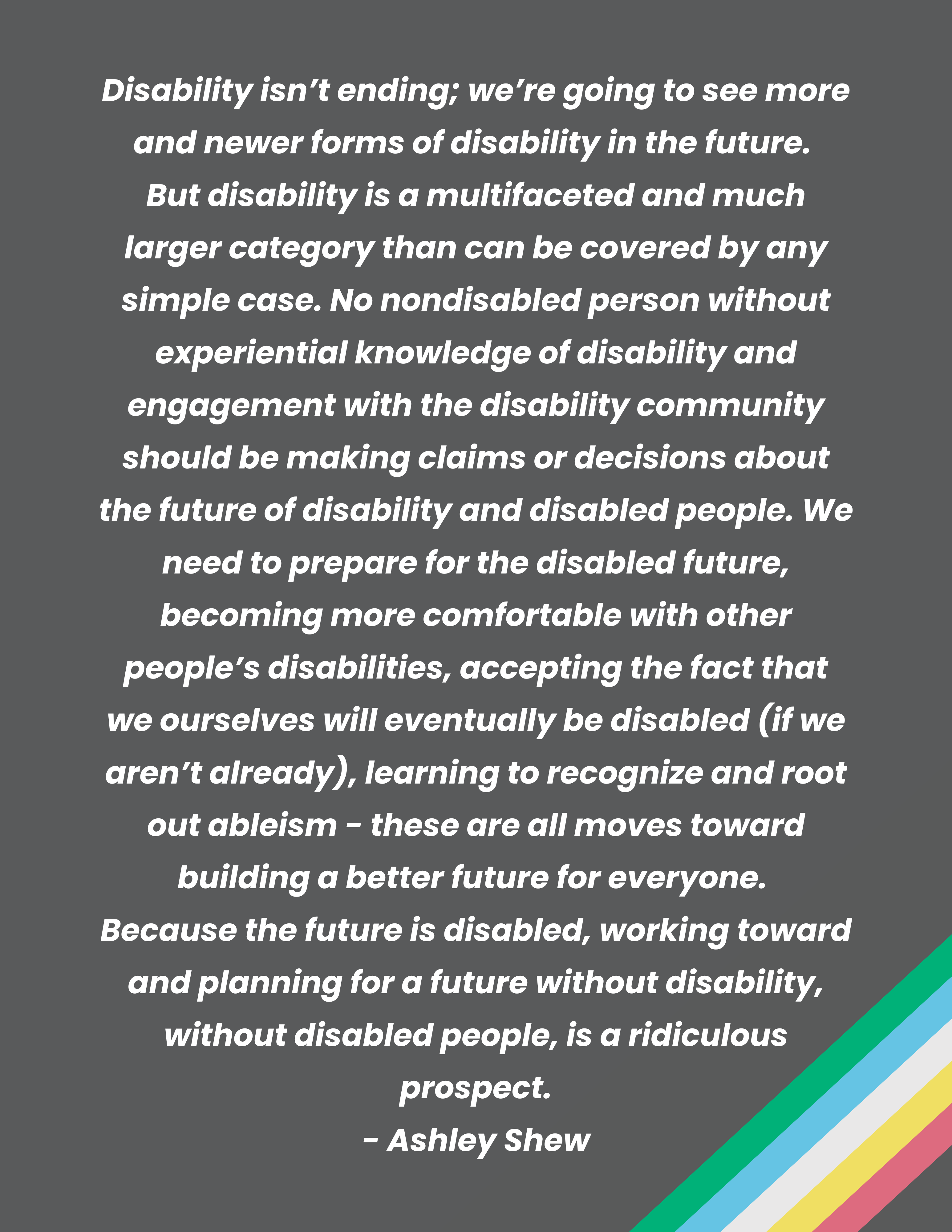
Discussion Questions
When you think of disability, what comes to your mind?
Do those things come from the experiences of people with disabilities, or from disability stereotypes perpetuated by able-bodied people?
What’s one thing you found surprising or interesting from the disability history exhibit?
Do you recognize any of this information? Why do you think these stories have been left out?
What would it look like to build a world with disability at the center and with access as a collective, shared value shaping our classrooms, dorms, workplaces, and other environments?
What resonated with you about the student’s shared perspectives or the presentation? Have you or someone you know personally experienced disability stigmatization?
“To crip something is to bend, compress, twist, subvert, and imbue disabled wisdom into systems, institutions, and cultures.” - Alice Wong
What feelings came up for you when you saw the word “crip” associated with this event? Why do you think those feelings came up? Now that you know more about crip reclamation, talk with your group about the reclamation of derogatory words.How would it feel to embrace disability as a part of being human?
“What might happen if we were to accept, claim, embrace our brokenness? I am curious too. I am curious what might happen if I, and we, experimented with living beyond the dichotomy of fixed or failed. If we let ourselves know that our good, complex, messy, and at times painful lives are successes.”― Leah Lakshmi Piepzna-Samarasinha, Care Work: Dreaming Disability Justice
What would it be like to consider disabilities not as detrimental but as an everyday aspect of life? What if we organized life around disability needs, rather than trying to force bodies and minds to fit within systems that may not work?List three things you could do in your life to destigmatize disability, create more inclusive and accessible spaces, or consider disability in your daily words and actions.
We commit to spaces where ____________.
Imagine a world where accessibility is designed for joy. What does it look like? What do I see as the “next step” to create liberation for disabled people?
“There is no one disabled future. But in mine, there is guaranteed income, housing, access, food, water, and education for all—or money has been abolished. I get paid to write from my bed. The births of disabled, Autistic, Mad, Neurodivergent, Deaf, and sick kids are celebrated, and there are memorials and healing and reparation sites on every psych ward, institution, nursing home, youth lockup, and ‘autistic treatment center’ where our people have been locked up and abused. Anyone who needs care gets it, with respect and autonomy, not abuse. Caregivers are paid well for the work we do and are often disabled ourselves. Disabled folks are the ones teaching medical school students about our bodies. Schools have been taken apart and remade so that there’s not one idea of ‘smart’ and ‘stupid,’ but many ways of learning. There is a disability justice section in every bookstore and a million examples of sick and disabled and Deaf and autistic and Mad folks thriving. I have a really sick lipstick-red spiral ramp curving around my house. Because it’s beautiful. Because I want it. Because I get to live free.”
— Leah Lakshmi Piepzna-Samarasinha, The Future Is Disabled: Prophecies, Love Notes, and Mourning Songs
